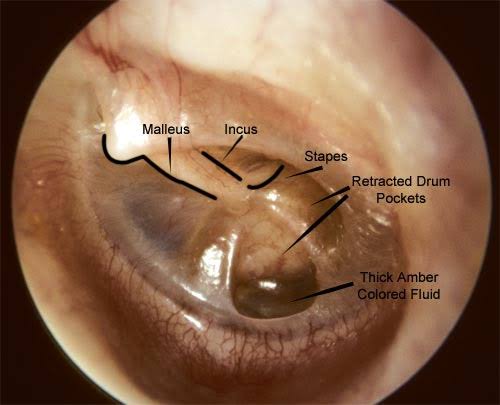What to know about glue ear
[ad_1]

Photo credit: istock photos
According to NHS, glue ear is where the empty middle part of the ear canal fills up with fluid. This can cause temporary hearing loss. It usually clears up within 3 months, but see a doctor about any hearing problems.
Check if it’s glue ear
The most common symptom of glue ear is temporary hearing loss. It can affect both ears at the same time.
Other symptoms may include:
1. earache or ear pain
2. hearing sounds like ringing or buzzing (tinnitus).
Glue ear is much more common in children, but adults with glue ear have the same symptoms.
Non-urgent advice:
See a doctor if your child has hearing problems
Your child may be struggling to hear if they often:
1. speak loudly
2. are difficult to understand
3. ask people to repeat what they say
4. ask for the TV or music to be turned up loud
5. struggle to hear people far away
6. become easily distracted when people are talking
7. seem tired and irritable because it’s harder to listen.
What happens at your appointment
The doctor should be able to tell if it’s glue ear by looking for fluid inside the ear.
They’ll use a small scope with a light and magnifying glass. This should not be painful.
If your child has had glue ear for more than 3 months, they may be referred to a specialist for hearing tests.
Hearing tests can help find out how severe any hearing loss is and what’s causing it.
Treatment for glue ear from a doctor
Glue ear is not always treated. The doctor will usually wait to see if the symptoms get better on their own.
This is because there’s no effective medicine for glue ear, and it often clears up on its own within 3 months.
Your child may be monitored for up to a year in case their symptoms change or get worse.
The doctor may suggest trying a treatment called autoinflation while waiting for symptoms to improve. Autoinflation can help fluid in the ear to drain.
It’s done by either:
1. blowing up a special balloon using 1 nostril at a time
2. swallowing while holding the nostrils closed.
As autoinflation has to be done several times a day, it’s not usually recommended for children under 3 years old.
Antibiotics may be prescribed if glue ear causes an ear infection.
Hospital treatment for glue ear
Your child may be referred to a specialist in hospital if:
1. glue ear symptoms are affecting their learning and development
2. they already had severe hearing loss before glue ear
3. they have Down’s syndrome or a cleft lip and palate, as glue ear is less likely to get better by itself.
The 2 main treatments are temporary hearing aids or grommets (small tubes implanted in the ear).
Occasionally, surgery may be recommended to remove some glands at the back of the nose (adenoids). This is known as an adenoidectomy.
The specialist in hospital will help you decide on the best treatment option.
Grommets for treating glue ear
A grommet is a small tube that’s placed in your child’s ear during surgery. It drains fluid away and keeps the eardrum open.
The grommet should fall out naturally within 6 to 12 months as your child’s ear gets better.
Content created and supplied by: Kwajaffa (via Opera
News )
[ad_2]

